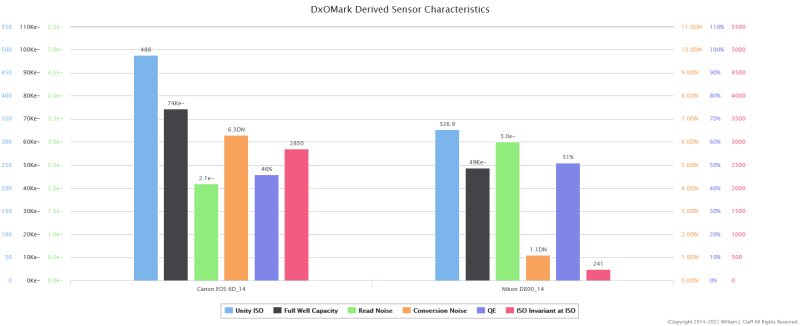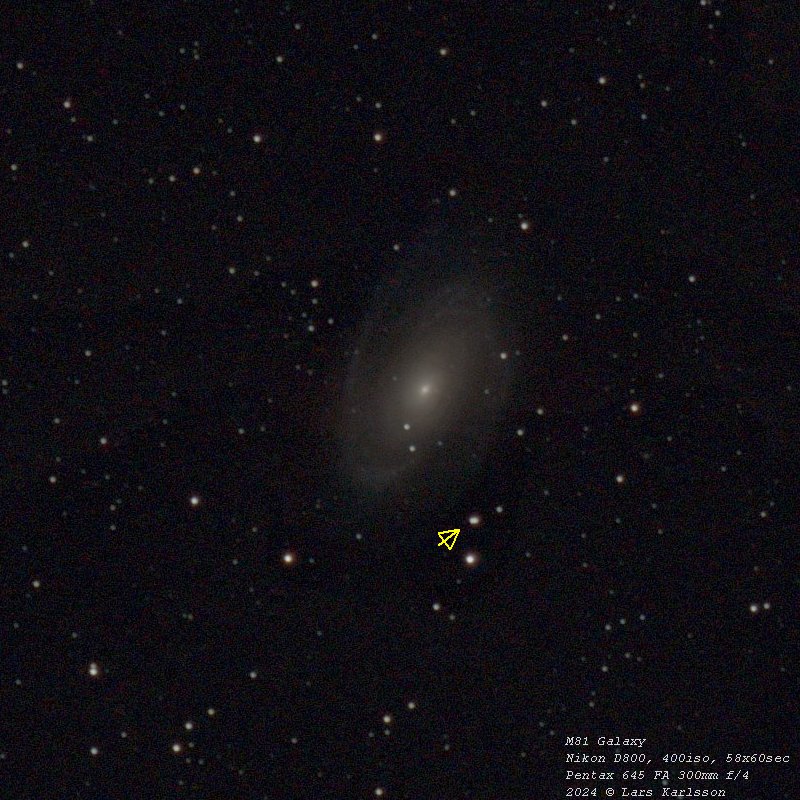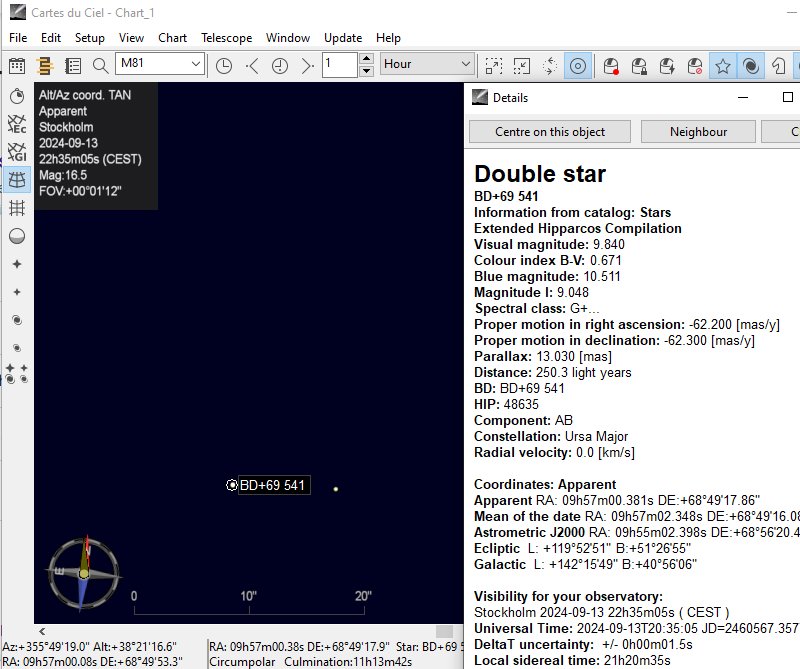|
Advertisement / Annons: |
Project:
|
Contents:
Note: Related projects: |
11: Nikon vs Canon, Pentax FA vs PentaxI got one more clear sky night and took a photo of the galaxy M81 from the balcony. I have the same object on a photo that I took with an older setup. Now I can compare them, note: these photos are taken from the balcony at Bortle Class 9. There are a lot of discussing about what ISO setting to use. Canon 6D has its pre amplifier that boost the signal before the ADC. It's recommended to set the ISO to 1600-3200 to get the lowest read out noise, but limit the dynamic range. Nikon D800 has its invariant ISO, it means that it doesn't influence the readout noise much between the ISO settings. Recommended ISO setting is 200-400. When doing stacking of a lot of images it's possible to detect weak stars below the noise in a single photo. It needs some noise to work and I have a lot of noise from the light pollution, even at dark places, Bortle Class 4 in my case. It's very complicated, there are so many parameters to have in mind. You can follow the discussions here: At the site "Photons to Photos" you can compare readout noise at different ISO settings:  Credit: Photons to Photos, Photons to Photos, Nikon D800 vs Canon 6D.
Credit: Photons to Photos, Photons to Photos, Nikon D800 vs Canon 6D.
Other characteristics of these two sensors:  Credit: Photons to Photos, Sensor Characteristics Nikon D800 vs Canon 6D.
Credit: Photons to Photos, Sensor Characteristics Nikon D800 vs Canon 6D.
Test:Here I compare the center and one corner of the photos from the two cameras and the two Pentax lenses. Note: this is a very simple test with not perfect control of the setup environment: Nikon D800, Pentax 645 FA 300mm ED f/4, center: (Click on the image and get one in full resolution in a new window)
(Click on the image and get one in full resolution in a new window)
This is a 800x800 1:1 crop around the center of the image. I have done about the same image processing of this image as I did on the Canon image, only the simplest methods. The Nikon's QE is listed to QE=0.51. Nikon's D800 sensor with smaller pixels relative the Canon 6D should be noisier because a smaller area (pixel) doesn't receive as many photons. 
A 4x zoom and 80x80 pixels around the egg shaped double star at the arrow. It's the double star BD+69 541.  (Credit: CdC Skychart)
(Credit: CdC Skychart)
The separation between the stars is about 9.5''. Nikon's 4.88 my pixels gives a pixel scale is 3.36". Each pixel visible and it's about 2.8 pixels between the stars center to center distance. Here I have listed data of different combinations of my equipment: My equipment. Canon 6D, Pentax 645 300mm ED f/4, center (Click on the image and get one in full resolution in a new window)
(Click on the image and get one in full resolution in a new window)
The same photo but now with the Canon 6D camera and the older Pentax lens. The Canon only have 20Mpix and I have upscaled the 606x606 crop to 800x800 to get the same image scale. Canon's QE is listed to QE=0.46. The double star isn't that well resolved with the Canon's bigger pixel scale, 4.5"/pixel, only 2.1 pixels between center to center of the double star. When I compare the Nikon's image with the Canon's can I see some differences. The Nikon setup looks a bit sharper. But is it because of the Nikon's 36Mpixels rel Canon's 20Mpixels ? Or is it because of the newer version of the Pentax lens, Pentax FA rel Pentax ? With my new equipment I also got the auto guiding to work better. Even the auto focus works better. The exposure is hard to tell because not any details of the weather these two nights more than it was a clear sky. Better color on the Nikon's image on the bright stars, it should be, with lower ISO setting it doesn't saturate the bright stars. But must have in mind that a better sharpness also concentrate more photons at the center pixels where the stars is, that make these center pixels to saturate earlier. Nikon D800, Pentax 645 FA 300mm ED f/4, right upper corner
From the same image I have done a 800x800 1:1 crop at the upper right corner. I have a tilt of the sensor and the stars are not as sharp as in the center where the focus is set. Still I feel I have better sharpness at the bright stars, could also be an effect that they are not saturated with this low ISO setting. Canon 6D, Pentax 645 300mm ED f/4, right upper corner
Same area but now with the Canon 6D and the older Pentax lens. Is the image from the Nikon and Pentax FA better or ? I feel so. This wasn't very serious test but still interesting to compare the two systems. One thing that stick out, on the Canon's raw files it's common with a dark band at the lower side of the image. Vignetting originated form the camera's mirror. I can't see this on the Nikon's raw files, maybe it's there but not visible because of the low ISO setting. Anyway my plane is to remove the mirror when I take away the filters of the Nikon camera. |
|
|